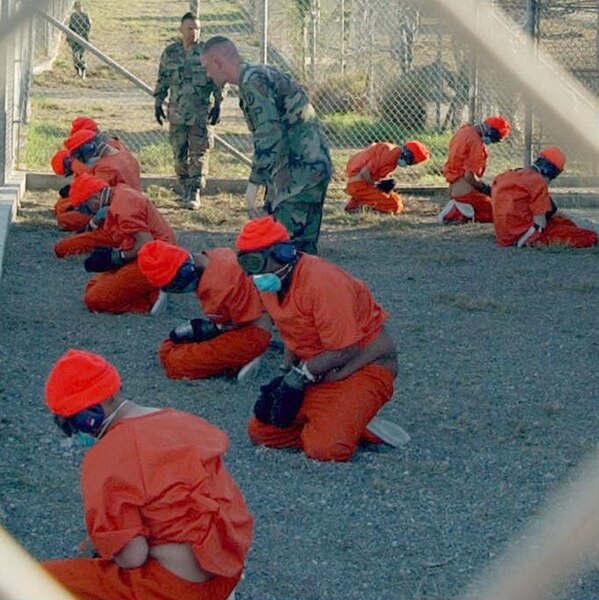
 Top Exporter of Missionaries in the World (2007)
Top Exporter of Missionaries in the World (2007)
1. U.S.A.
2. South Korea
With between 12,000 and 17,000 missionaries in over 160 countries, South Korea has one of the biggest and most aggressive armies of Christian missionaries on earth. The number is second only to the estimate for the United States of 46,000. A conservative association of Protestant churches in South Korea has called for dispatching 100,000 missionaries by 2030.
Along with those full-time missionaries, South Korean churches dispatch numerous short-term evangelical, educational and medical missions. Saemmul Church has stressed that Bae's group was not engaged in evangelism, doing only relief work at hospitals and kindergartens. Nonetheless, the hostage crisis, and the deportation last year of 1,600 South Korean Christians gathering for a "peace festival" in Afghanistan, highlighted the overseas activities of South Korean Christians.
 Above: Members of Korean Christian group who were in Afghanistan.
Above: Members of Korean Christian group who were in Afghanistan.
 Above: Korean Christian group member with Afghani children.
Above: Korean Christian group member with Afghani children."In South Korean churches, emphasis has always been on growth and expansion," said Lee Won Gue, a professor at Methodist Theological Seminary in Seoul. "There is a fierce competition among churches, so much so that the reputation of the pastor or his church often depends on how many missionaries are sent abroad and how many churches are built there."
Even small churches finance missionary expeditions, thanks to congregations generous with cash donations. Churches advertise their overseas missionary work to attract young members.
"Traditionally the number of missionaries from a country has depended on that country's economic power. In South Korea's case, the number far exceeds its economic standing," said Song Jae Ryong, a sociologist at Seoul's Kyunghee University. "Like Koreans in general, the Korean churches have a strong tendency of following a trend as a pack and going relentlessly after a goal."
In such an atmosphere, young people going on short-term missions arranged by these churches often do not properly train on safety and learn about indigenous religious and cultural backgrounds of their host countries, Song said.

 Above: Members of Korean Christian group approach Afghani children and have them sing a hymn for Jesus.
Above: Members of Korean Christian group approach Afghani children and have them sing a hymn for Jesus.Rev. Bae Hyung-kyu was the first hostage killed by the Taliban on July 26, 2007. Bae was an affable leader in charge of 300 youth members of his 9-year-old Saemmul Church. He looked the part when his group, most of its members in their 20s and 30s, posed for a group picture on July 13, when they left for Afghanistan. All smiled and raised clenched fists.
 Above: A personal photo of one of the female Christian hostages (circled in red).
Above: A personal photo of one of the female Christian hostages (circled in red).
Bae left a job at a big South Korean company to study theology. He was ordained in 2001. He regularly traveled abroad on volunteer missions, most recently to Bangladesh. He reportedly told his friends that he "wanted to save people not with money, but with religion." His dream came to an abrupt end when Taliban gunmen stopped a bus carrying Bae's group from Kabul to the southern city of Kandahar.

Above: The Afghan government permitted a "cultural festival" by the IACD (Institute of Asian Culture and Development) but the Institute is argued to be a Korean Christian group.

Above: The Korean group shows the Afghani people their martial arts.
Above: The Korean group shows the Afghani people their traditional ethnic dance.

Above: Then the Korean group allegedly performed a Christian worship and sang a hymn for Jesus in Korean and English.




Above Pictures: It is claimed by a beggar and a man who interviewed him that the Christian Korean group obtained access past staff and guards to holy Islamic sites, like a mosque and a grave, by wearing black Islamic veils and then conducted their prayers through Christian worship.
Alternate Explanations


Some have argued that the pictures of the Koreans in Islamic veils is authetic and that they are simply are Muslim converts inside Afghanistan, as evidenced by these above pictures indicating the influence of Islam in South Korea.
The US Originally Imported Radical Christianity to KoreaProtestant missionaries from the US came to the Korean peninsula in the late 19th century.
Christianity initially failed to make a big impact in China and Japan, where missionaries were regarded as agents of Western imperialism.
Seoul's Yoido Full Gospel Church is the largest in the world. But the "religion from the West" spread quickly in the Hermit Kingdom, and American missionaries were seen by Korean nationalists as a source of support in their fight against Japanese colonial rulers.
Now South Korea has the largest percentage of evangelical Christians in Asia, at about 25% of the population. Having achieved such a following at home, Korean churches have started in the last couple of decades to look at ways to expand abroad.
Above: A Christian puts his hand on the head of monk raising alms in Korea.
"Pastors of big churches want to show off that they are doing something great for Christianity. Korea is a small country that has achieved a strong economy, and it wants to show its success to the world," said Chung-shin Park, a professor of Korean church history.
"Apart from the strong religious zeal, there is also a sense of nationalism behind this," he said.
"The church's ambition is to overtake the US and become the world's number one exporter of missionaries within the next two decades."
Source:
http://allahholy.blogspot.com/ ;
http://news.bbc.co.uk/2/hi/asia-pacific/6915268.stm ;
http://www.iht.com/articles/2007/07/26/asia/korea.php?page=1



 Above: Members of Korean Christian group who were in Afghanistan.
Above: Members of Korean Christian group who were in Afghanistan.
 Above: Korean Christian group member with Afghani children.
Above: Korean Christian group member with Afghani children.
 Above: Members of Korean Christian group approach Afghani children and have them sing a hymn for Jesus.
Above: Members of Korean Christian group approach Afghani children and have them sing a hymn for Jesus. Above: A personal photo of one of the female Christian hostages (circled in red).
Above: A personal photo of one of the female Christian hostages (circled in red).








 Some have argued that the pictures of the Koreans in Islamic veils is authetic and that they are simply are Muslim converts inside Afghanistan, as evidenced by these above pictures indicating the influence of Islam in South Korea.
Some have argued that the pictures of the Koreans in Islamic veils is authetic and that they are simply are Muslim converts inside Afghanistan, as evidenced by these above pictures indicating the influence of Islam in South Korea.




 The federal government of Canada is proposing to ease restrictions on foreign law-enforcement officers who carry weapons into Canada.
The federal government of Canada is proposing to ease restrictions on foreign law-enforcement officers who carry weapons into Canada.

 It appears their goal is not to keep out immigrants, who are indispensable to the U.S. economy, but rather to control and exploit them more effectively. Why give them the opportunity to become citizens—or even permanent residents—if we can get what we need from them and then send them packing?
It appears their goal is not to keep out immigrants, who are indispensable to the U.S. economy, but rather to control and exploit them more effectively. Why give them the opportunity to become citizens—or even permanent residents—if we can get what we need from them and then send them packing?




 Fashion shows of outfits that abide by Islamic dress codes are common. All-women shows of new designs that don't are relatively rare. But fashion exhibitions featuring scantily clad models parading before mixed audiences of men and women almost never take place here. At least one major Internet service provider even forbids Google searches for the word "fashion."
Fashion shows of outfits that abide by Islamic dress codes are common. All-women shows of new designs that don't are relatively rare. But fashion exhibitions featuring scantily clad models parading before mixed audiences of men and women almost never take place here. At least one major Internet service provider even forbids Google searches for the word "fashion." Additional Link:
Additional Link: 